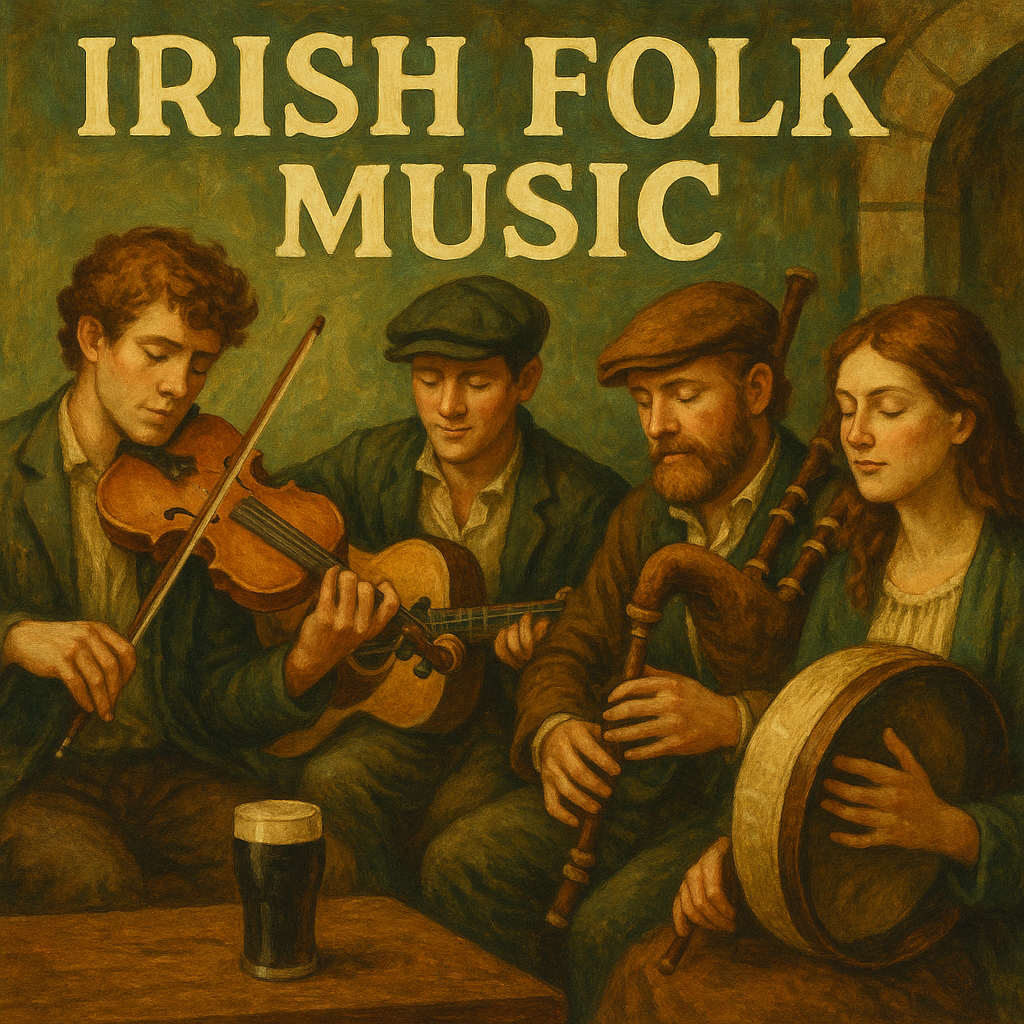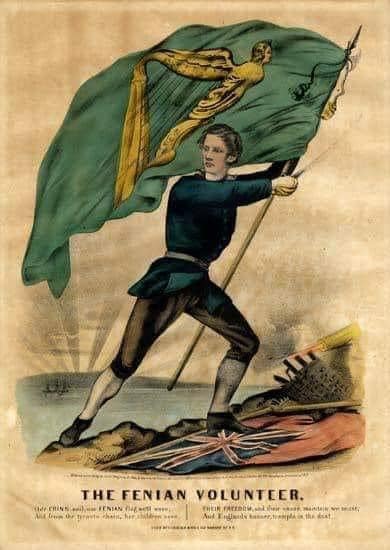
Folk music. The very term conjures images of crackling fireplaces, intimate gatherings, and voices raised in timeless melodies.
It speaks of community, storytelling, and the enduring human spirit. But in our digitally saturated age, what exactly is folk music?
Why does it continue to resonate across generations and cultures? Join us on a comprehensive journey into the heart of folk music, exploring its definitions, iconic figures, diverse forms, and enduring appeal.
What is Considered Folk Music?
This is a question that sparks lively debate among enthusiasts and scholars alike. At its core, folk music is generally understood as music that originates from and is transmitted within a particular community or culture, often through oral tradition. It’s the music of the people, reflecting their daily lives, stories, struggles, and celebrations.
Key characteristics often associated with folk music include:
- Oral Tradition: Historically, folk songs were learned and passed down through singing and listening, rather than written notation. While written versions now exist for many, the oral tradition remains a significant aspect.
- Community Ownership: Folk music is often seen as belonging to the community from which it originates, rather than a specific composer. Songs can evolve and change over time through collective performance and adaptation.
- Simple Structures and Melodies: While complexity exists within various folk traditions, many folk songs feature relatively straightforward melodies, harmonies, and song structures, making them accessible and easy to learn and sing along to.
- Storytelling: Narrative is often central to folk music. Songs frequently tell stories of love, loss, work, historical events, legends, and everyday life.
- Use of Traditional Instruments: Folk music often features instruments that are characteristic of the region or culture, such as the acoustic guitar, banjo, fiddle, accordion, harmonica, and various indigenous instruments.
- Connection to Cultural Identity: Folk music plays a vital role in expressing and preserving cultural heritage and identity. It can be a powerful symbol of belonging and shared history.
Folk music Examples abound across the globe, from the sea shanties of maritime communities to the work songs of agricultural laborers and the ballads of wandering minstrels.
Who is the Most Popular Folk Singer?
Defining the “most popular” folk singer is subjective and depends on the era and criteria. However, several artists have undeniably had a profound and lasting impact on the genre and achieved widespread recognition. Names that consistently arise in this discussion include:
- Bob Dylan: Arguably the most influential figure in modern folk music, Dylan’s songwriting prowess and socially conscious lyrics in the 1960s revolutionized the genre and propelled it into the mainstream. His impact on folk music artists and folk music songs is immeasurable.
- Joan Baez: With her powerful voice and unwavering commitment to social justice, Baez became a prominent voice of the folk revival movement and a key interpreter of traditional and contemporary folk music songs.
- Pete Seeger: A tireless advocate for peace and social change, Seeger’s infectious enthusiasm and singalong anthems made folk music accessible and participatory for generations.
- Woody Guthrie: The Dust Bowl poet, Guthrie’s songs chronicled the struggles of working-class Americans and remain powerful testaments to resilience and social consciousness.
While contemporary folk music artists like Mumford & Sons, The Lumineers, and Fleet Foxes have achieved significant commercial success, the historical impact and cultural significance of Dylan, Baez, Seeger, and Guthrie place them firmly in the pantheon of the most influential and arguably “popular” folk singers. You can find many of their iconic folk music songs on Folk music youtube channels and Folk music playlist compilations.
What is Irish Folk Music Called?
Irish folk music is often simply referred to as Irish traditional music or trad music. It’s a vibrant and diverse genre with distinct regional styles and a rich history dating back centuries. Characterized by its intricate melodies, rhythmic vitality, and the prominent use of instruments like the fiddle, tin whistle, flute, bodhrán, and uilleann pipes, Irish traditional music is a cornerstone of Irish cultural identity. You can explore numerous folk music youtube channels dedicated to Irish trad music.
What is the Greatest Folk Song of All Time?
Determining the “greatest” folk music song is an impossible task, as beauty and impact are subjective. However, several songs are consistently cited for their enduring power, historical significance, and widespread recognition. These include:
- “Blowin’ in the Wind” (Bob Dylan)
- “The Times They Are a-Changin'” (Bob Dylan)
- “Hallelujah” (Leonard Cohen, often covered in a folk style)
- “House of the Rising Sun” (traditional, popularized by The Animals)
- “Amazing Grace” (traditional hymn with folk roots)
- “This Land Is Your Land” (Woody Guthrie)
These folk music songs resonate with universal themes of social justice, change, hardship, and hope, contributing to their lasting appeal. You can easily find these and many other influential folk music songs on various Folk music playlist options.
What are the 7 Types of Folk Songs?
While categorizing folk music into a rigid set of “types” can be limiting due to its diverse and evolving nature, some common classifications based on theme and function include:
- Narrative Songs (Ballads): These songs tell stories, often of historical events, legends, tragic love, or heroic deeds.
- Lyric Songs: Focusing on emotions, moods, and personal experiences rather than a strong narrative. Love songs, laments, and nature songs fall into this category.
- Work Songs: Sung by people engaged in labor, these songs often feature rhythms that synchronize with the work being done (e.g., sea shanties, field hollers).
- Protest Songs: Addressing social and political issues, advocating for change, and expressing dissent.
- Children’s Songs: Simple songs, often with repetitive lyrics and melodies, used for entertainment and education.
- Religious Songs (Spirituals, Hymns): Expressing religious faith, praise, and devotion.
- Dance Songs: Instrumental or vocal pieces intended to accompany traditional dances.
It’s important to note that these categories can overlap, and many folk music songs may exhibit characteristics of multiple types. Exploring different Folk music playlist compilations can help illustrate these diverse types of folk music.
What is the Oldest Folk Song?
Pinpointing the absolute oldest folk music song is incredibly difficult due to the oral tradition. Songs evolved and changed over time, and written records are often scarce for very early forms. However, some scholars point to certain ballads with roots tracing back centuries, their core narratives and melodic structures persisting through generations. Examples include some traditional ballads from the British Isles, like “Barbara Allen,” which has documented versions dating back to the 17th century but likely existed in oral tradition long before. The study of ethnomusicology offers insights into the potential origins and evolution of ancient folk music songs.
Is Ed Sheeran a Folk Singer?
While Ed Sheeran incorporates acoustic elements and storytelling into some of his music, he is generally considered a pop singer-songwriter with influences from various genres, including folk, hip-hop, and R&B. While some of his songs might have a folk-pop sensibility, his overall sound, production, and mainstream appeal place him outside the traditional definition of a folk music artist.
Who is the Queen of Folk Music?
Similar to the “most popular” question, the “Queen of Folk Music” is a title often debated. However, Joan Baez is a name that frequently arises and is widely respected for her powerful voice, her interpretations of traditional folk music songs, and her unwavering commitment to social activism. Her influence on the folk revival and her enduring career have solidified her status as a legendary figure in the genre. Other artists like Joni Mitchell and Judy Collins have also made significant and influential contributions to folk music, blurring genre lines and carving out their own unique spaces.
What Qualifies as a Folk Song?
Revisiting our initial definition, a song typically qualifies as folk music if it exhibits several of the key characteristics mentioned earlier:
- Strong connection to a specific community or culture.
- Evidence of transmission through oral tradition (historically or currently).
- Themes and narratives relevant to the lives and experiences of the community.
- Often features traditional instruments associated with the culture.
- A sense of collective ownership or adaptation over time.
The lines can blur, especially with contemporary folk music artists who draw inspiration from traditional forms but also incorporate modern elements. The intent, the connection to roots, and the spirit of community often play a significant role in how a song is perceived and categorized.
How Do You Know If a Song Is Folk?
Identifying a folk song often involves considering a combination of factors:
- Instrumentation: The prominent use of acoustic instruments traditionally associated with folk music (guitar, banjo, fiddle, harmonica, accordion, etc.).
- Melody and Harmony: Often relatively simple and accessible, though variations and complexities exist.
- Lyrics and Themes: Storytelling, social commentary, personal experiences, historical events, and cultural traditions are common lyrical themes.
- Vocal Style: Can range from raw and untrained to clear and melodic, often emphasizing the narrative.
- Historical Context: Understanding the origins and transmission of the song can provide crucial clues. Is it a traditional song passed down through generations? Is it a contemporary song that draws heavily on folk traditions?
Listening to various folk music examples on Folk music youtube and exploring Folk music playlist compilations can help develop an ear for the genre’s characteristics.
How Do You Classify Folk Music?
Classifying types of folk music can be approached in several ways:
- By Region/Culture: Irish folk music, Appalachian folk music, Indian folk music of India, Scandinavian folk music, etc. This is a primary way of understanding the diversity of the genre.
- By Theme/Function: As discussed earlier (narrative, lyric, work songs, etc.).
- By Historical Period: Early folk ballads, folk revival songs of the 1960s, contemporary folk.
- By Instrumentation: Acoustic folk, folk rock, etc.
The most common and informative way to classify folk music is often by its cultural or regional origin, as this strongly influences its instrumentation, melodic style, and lyrical themes. Exploring the rich tapestry of folk music of India on Folk music youtube, for instance, reveals unique instruments and musical traditions distinct from European folk music.
Is Bob Dylan Folk Music?
Bob Dylan’s relationship with folk music is complex and has evolved over time. He emerged from the American folk revival of the early 1960s, heavily influenced by artists like Woody Guthrie. His early work was deeply rooted in traditional folk music songs and protest anthems. However, he later incorporated electric instruments and more rock-oriented sounds, sparking debate among purists.
While his sound diversified, Dylan’s songwriting remained deeply rooted in storytelling and social commentary, core elements of folk tradition. He undeniably played a pivotal role in shaping modern folk music and bringing it to a wider audience. While not strictly adhering to traditional definitions throughout his career, his early and influential work firmly places him within the folk music artists landscape.
What Song is an Example of Folk?
A quintessential folk music example is “The House of the Rising Sun.” Its origins are murky, suggesting a long history in oral tradition, possibly dating back to the 19th century or earlier. It tells a narrative (a cautionary tale about a life gone wrong in New Orleans), features a relatively simple but powerful melody, and has been interpreted and adapted by numerous artists over generations. Its enduring popularity and mysterious origins embody many key aspects of folk music. You can find various versions of this iconic folk music song on Folk music youtube.
What is the Difference Between Traditional Music and Folk Music?
While the terms are often used interchangeably, there can be subtle distinctions:
- Traditional Music: Often refers to music that has been passed down through generations within a specific cultural group, often associated with specific rituals, dances, or ceremonies. It emphasizes the preservation of established forms and styles.
- Folk Music: While also rooted in tradition, “folk music” can sometimes encompass a broader range, including contemporary songs that draw heavily on traditional styles and themes but may not have the same long history of oral transmission within a specific ritualistic context. The folk revival movement, for instance, saw contemporary artists interpreting and creating music inspired by traditional forms.
In many cases, the overlap is significant, and the terms are used synonymously, particularly when discussing the music of a specific cultural group (e.g., Irish traditional music is also Irish folk music).
What are Traditional Folk Songs?
Traditional folk songs are those that have been passed down through generations, typically through oral tradition. Their origins are often unknown or obscured by time, and they may have evolved and changed through collective performance and adaptation. They often reflect the history, culture, and daily lives of the communities from which they originated. Many of the iconic folk music songs mentioned earlier, like “House of the Rising Sun” and “Barbara Allen,” fall into this category.
What Makes a Song Folk Music?
Ultimately, what makes a song folk music is a combination of its origins, transmission, style, themes, and its connection to a community or cultural tradition. While strict definitions can be debated, the essence of folk music lies in its role as the voice of the people, reflecting their stories, struggles, and celebrations through timeless melodies and narratives. The use of traditional folk music instruments often further reinforces this connection.
Why Do People Like Folk Music?
The enduring appeal of folk music lies in its ability to connect with listeners on a deeply human level:
- Storytelling: Folk songs often tell compelling stories that resonate with universal human experiences.
- Authenticity: There’s often a raw and genuine quality to folk music, rooted in real lives and emotions.
- Connection to Roots and Heritage: Folk music can provide a powerful link to cultural identity and traditions.
- Community and Participation: Many folk traditions encourage singing along and collective music-making, fostering a sense of community.
- Social Commentary: Folk music has historically been a powerful tool for expressing social and political concerns.
- Simplicity and Beauty: The often straightforward melodies and harmonies can be deeply moving and accessible.
Whether it’s the intricate melodies of Irish trad, the poignant narratives of American ballads, or the vibrant rhythms of Indian folk music of India, the emotional core and cultural significance of folk music continue to captivate audiences worldwide.
Is Folk Music Still Popular?
Absolutely! While it may not always dominate the mainstream charts, folk music continues to thrive in various forms:
- Contemporary Folk Artists: A vibrant scene of modern folk music artists blends traditional influences with contemporary sounds, reaching new audiences.
- Folk Festivals and Gatherings: Numerous festivals around the world celebrate traditional and contemporary folk music, drawing dedicated fans.
- Online Communities: Platforms like Folk music youtube and online forums connect enthusiasts and provide access to a vast repertoire of folk music songs and performances.
- Influence on Other Genres: Folk music’s storytelling and acoustic elements continue to influence popular music across various genres.
- Enduring Appeal of Traditional Forms: The timeless beauty and cultural significance of traditional folk music ensure its continued performance and appreciation.
You can easily find thriving Folk music playlist communities and discover new and established folk music artists online, demonstrating the genre’s ongoing relevance and popularity.
Conclusion:
Folk music is more than just a genre; it’s a living tradition, a testament to the power of music to connect communities, preserve stories, and express the enduring human spirit. From the ancient ballads passed down through generations to the contemporary artists reimagining its forms, folk music continues to evolve and resonate. By exploring its diverse forms, iconic figures, and enduring themes, we gain a deeper appreciation for this vital and vibrant cornerstone of our global musical heritage. So, delve into a Folk music playlist, explore the vast archives on Folk music youtube, and discover the timeless heartbeat of folk music for yourself.





